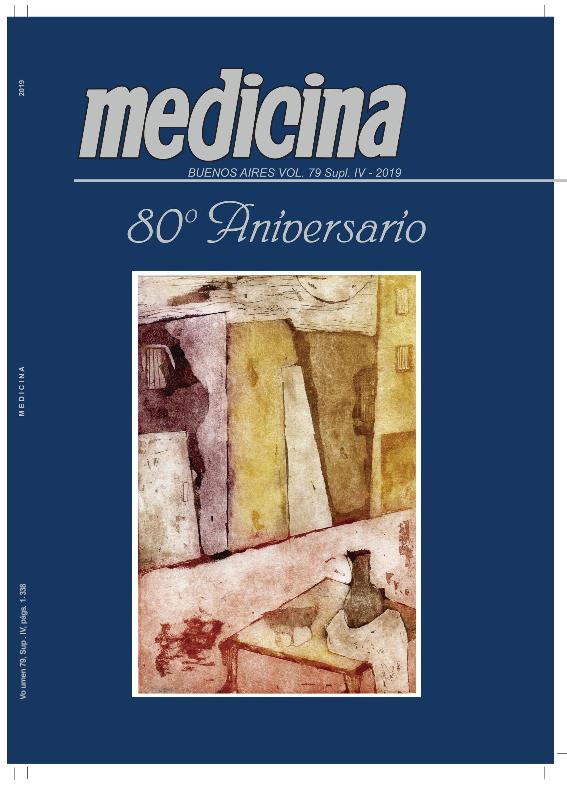Evento
C-terminal-truncated and full length hemeoxygenase-1 exert opposite behavior of head and neck cancer cells
Mascaró, Marilina ; Alonso, Exequiel Gonzalo
; Alonso, Exequiel Gonzalo ; Gandini, Norberto Ariel
; Gandini, Norberto Ariel ; Ferronato, María Julia
; Ferronato, María Julia ; Guevara, Josefina Alejandra
; Guevara, Josefina Alejandra ; Alonso, Eliana Noelia
; Alonso, Eliana Noelia ; Colo, Georgina Pamela
; Colo, Georgina Pamela ; Pichel, Pamela; Recio, Sergio Ceferino; Curino, Alejandro Carlos
; Pichel, Pamela; Recio, Sergio Ceferino; Curino, Alejandro Carlos ; Facchinetti, Maria Marta
; Facchinetti, Maria Marta
 ; Alonso, Exequiel Gonzalo
; Alonso, Exequiel Gonzalo ; Gandini, Norberto Ariel
; Gandini, Norberto Ariel ; Ferronato, María Julia
; Ferronato, María Julia ; Guevara, Josefina Alejandra
; Guevara, Josefina Alejandra ; Alonso, Eliana Noelia
; Alonso, Eliana Noelia ; Colo, Georgina Pamela
; Colo, Georgina Pamela ; Pichel, Pamela; Recio, Sergio Ceferino; Curino, Alejandro Carlos
; Pichel, Pamela; Recio, Sergio Ceferino; Curino, Alejandro Carlos ; Facchinetti, Maria Marta
; Facchinetti, Maria Marta
Tipo del evento:
Reunión
Nombre del evento:
LXIV Reunión Anual de la Sociedad Argentina de Investigación Clínica; LI Reunión Anual de la Asociación Argentina de Farmacología Experimenta; XXI Reunión Anual de la Sociedad Argentina de Biología; XXXI Reunión Anual de la Sociedad Argentina de Protozoología; IX Reunión Anual de la Asociación Argentina de Nanomedicinas y VI Reunión Científica Regional de la Asociación Argentina de Ciencia y Tecnología de Animales de Laboratorio
Fecha del evento:
13/11/2019
Institución Organizadora:
Sociedad Argentina de Investigación Clínica;
Asociación Argentina de Farmacología Experimental;
Sociedad Argentina de Biología;
Sociedad Argentina de Protozoología;
Asociación Argentina de Nanomedicinas;
Asociación Argentina de Ciencia y Tecnología de Animales de Laboratorio;
The Histochemical Society;
Título de la revista:
Medicina (Buenos Aires)
Editorial:
Fundación Revista Medicina
ISSN:
0025-7680
e-ISSN:
1669-9106
Idioma:
Inglés
Clasificación temática:
Resumen
We previously reported that heme oxygenase-1 (HO-1) protein is up-regulated in human HNSCC samples and that it is localized in the cytoplasmic and nuclear compartments. We also reported that high expression of HO-1 mRNA is associated with worst survival and that pharmacological activation of HO-1 by hemin increases viability of HN13 cells. However, how full length (FL-HO1) and C-terminal truncated (t- HO1) HO-1 affects HNSCC remains elusive. In this study, we to elucidate if such forms of HO-1 impacts on head and neck cancer cells behavior. We established the FL-HO1 and t-HO1 overexpressing HN13 cells. We evaluated cell viability by crystal violet method, cell cycle progression by propidium iodide staining and flow cytometry, and cell migration by wound healing assay. In addition to our previous results using hemin, we found that 80 μM hemin increased cell number in S- (p<0.001) and G2/M (p<0.001) phases and diminished cell number in Go/G1 phase (p<0.001) at 72h. We also found that hemin delayed cell migration (p<0.01) respect to control. On the contrary, at same conditions, hemin failed to increase cell viability (p>0.05) neither alters cell cycle progression (p>0.05) in the normal keratinocyte cell line, HaCaT. By a genetic approach, we found that FL-HO1 HN13 cells have a higher growth rate (p<0.001) than its control and cell cycle progression is as similar as (p<0,001 vs control) it was observed with hemin treatment. However, FL-HO1 failed to alter migratory capacity (p>0.05). We also found that t-HO1 expression impaired HN13 cell viability (p<0.01 vs. FL-HO1 HN13) and induces a Go/G1 arrest (p<0.01) and a diminished cell number in SubGo (p<0.01) and S- (p<0.05) phases. Also, we found that t-HO1 expression delayed cell migration (p<0.001) respect to FL-HO1 HN13. In conclusion, our results show that head and neck cancer cells survival, cell cycle progression and migration capacity depends on predominant HO-1 form.
Palabras clave:
HEMEOXYGENASE-1
,
C-TERMINAL TRUNCATED
,
FULL LENGHT
,
HEAD AND NECK CANCER
Archivos asociados
Licencia
Identificadores
Colecciones
Eventos(INIBIBB)
Eventos de INST.DE INVEST.BIOQUIMICAS BAHIA BLANCA (I)
Eventos de INST.DE INVEST.BIOQUIMICAS BAHIA BLANCA (I)
Citación
C-terminal-truncated and full length hemeoxygenase-1 exert opposite behavior of head and neck cancer cells; LXIV Reunión Anual de la Sociedad Argentina de Investigación Clínica; LI Reunión Anual de la Asociación Argentina de Farmacología Experimenta; XXI Reunión Anual de la Sociedad Argentina de Biología; XXXI Reunión Anual de la Sociedad Argentina de Protozoología; IX Reunión Anual de la Asociación Argentina de Nanomedicinas y VI Reunión Científica Regional de la Asociación Argentina de Ciencia y Tecnología de Animales de Laboratorio; Mar del Plata; Argentina; 2019; 194-194
Compartir



